DC/DC Power Converters
Wall Industries, Inc offers a wide selection of electronic devices that convert DC voltage from one level to another, available in a wide range of power ratings, ranging from 1/2 watt to 1,500 watts. Our diverse selection of DC to DC converters includes encapsulated, PC board mount, surface mount, chassis mount, air ventilated enclosed, and open frame types.
Whether you need a low-power converter for portable devices or a high-power converter for industrial and transportation applications, we have the right product for your needs. Browse through our collection and find the DC to DC converter that meets your requirements.
| Series | Input Range |
Input Voltage |
Output Voltage |
No. Outputs |
Output Power (W) |
|
|---|---|---|---|---|---|---|
DCDA1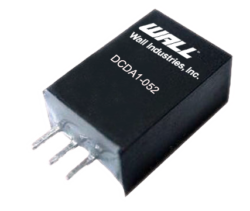 Series Description: The PSAYC series of AC/DC switching power supplies provides 2 watts of output power in a 1.33" x 0.87* x 0.67* encapsulated PCB mountable package. | Input Voltage: 4.75~36, 6.5~36, 9~36, 12~36, 15~36, 18~36 | Input Voltage: 4.75~36, 6.5~36, 9~36, 12~36, 15~36, 18~36 | Output Voltage: 1.8, 2.5, 3.3, 5, 6.5, 9, 12, 15 | No. Outputs: S | Output Power (W): - | Get a QuoteDownload Datasheet |
The DCDA1 series of non-isolated DC/DC converters offers 2A of output current in an ultra-compact 0.45” x 0.33” x 0.69” 3-Pin SIP package. | ||||||
XNED3954 Series Description: The PSAYC series of AC/DC switching power supplies provides 2 watts of output power in a 1.33" x 0.87* x 0.67* encapsulated PCB mountable package. | Input Voltage: 16~36 | Input Voltage: 28 | Output Voltage: 5, 5 | No. Outputs: D | Output Power (W): - | Get a QuoteDownload Datasheet |
The XNED3954 provides an isolated primary and secondary HIGH pulse (or open collector LOW) that can be used to turn on a MOSFET or Thyristor to shut down and discharge a power supply in the event of a nuclear blast. | ||||||
DCMAR1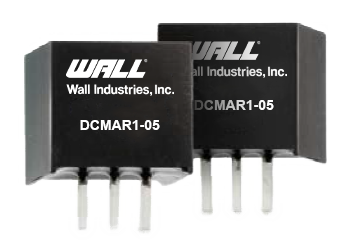 Series Description: The PSAYC series of AC/DC switching power supplies provides 2 watts of output power in a 1.33" x 0.87* x 0.67* encapsulated PCB mountable package. | Input Voltage: 6.5~32, 15~32 | Input Voltage: 6.5~32, 15~32 | Output Voltage: 3.3, 5, 12 | No. Outputs: S | Output Power (W): - | Get a QuoteDownload Datasheet |
The DCMAR1 series of DC/DC switching regulators offers 1A of output current in a compact industrial 0.45” x 0.30” x 0.40” standard SIP-3 package. | ||||||
DCMAR05 Series Description: The PSAYC series of AC/DC switching power supplies provides 2 watts of output power in a 1.33" x 0.87* x 0.67* encapsulated PCB mountable package. | Input Voltage: 4.75~32, 6.5~32, 8~32, 11~32, 15~32, 18~32 | Input Voltage: 4.75~32, 6.5~32, 8~32, 11~32, 15~32, 18~32 | Output Voltage: 1.5, 1.8, 2.5, 3.3, 5, 6.5, 9, 12, 15 | No. Outputs: S | Output Power (W): - | Get a QuoteDownload Datasheet |
The DCMAR05 series of DC/DC switching regulators offers 0.5A output current in a compact 0.45” x 0.30” x 0.40” standard SIP-3 package. | ||||||
LANE-C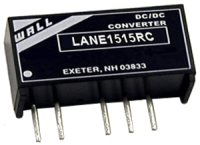 Series Description: The PSAYC series of AC/DC switching power supplies provides 2 watts of output power in a 1.33" x 0.87* x 0.67* encapsulated PCB mountable package. | Input Voltage: 10.8-13.2, 13.5-16.5, 21.6-26.4, 4.5-5.5 | Input Voltage: 5, 12, 15, 24 | Output Voltage: 5, 9, 12, 12.75, 15 | No. Outputs: S | Output Power (W): 0.5, 0.9, 1 | Get a QuoteDownload Datasheet |
DC to DC Converters - LANE-C series DC/DC converters are specifically designed for use with flash PROM devices providing the required stability at programming voltages. | ||||||
MSLUH Series Description: The PSAYC series of AC/DC switching power supplies provides 2 watts of output power in a 1.33" x 0.87* x 0.67* encapsulated PCB mountable package. | Input Voltage: 10.8~13.2, 21.6~26.4, 4.5~5.5 | Input Voltage: 5, 12, 24 | Output Voltage: 3.3, 5, 12, 15, ±5, ±12, ±15 | No. Outputs: S, D | Output Power (W): 0.86, 1 | Get a QuoteDownload Datasheet |
DC to DC Converters - The MSLUH series power modules are 1W DC/DC converters that are specially designed to provide high levels of isolation (3000VDC) in a miniature “gull-wing” SMT package. | ||||||
SUD1 Series Description: The PSAYC series of AC/DC switching power supplies provides 2 watts of output power in a 1.33" x 0.87* x 0.67* encapsulated PCB mountable package. | Input Voltage: 2.9~3.6, 4.5~5.5, 10.8~13.2,13.4~16.4, 21.6~26.4 | Input Voltage: 3.3, 5, 12, 15, 24 | Output Voltage: 3.3, 5, 9, 12, 15, 24 | No. Outputs: S | Output Power (W): 1 | Get a QuoteDownload Datasheet |
The SUD1 series of unregulated DC/DC converters offers up to 1 watt of output power 0.45” x 0.24” x 0.39” compact package. | ||||||
LANE-6KV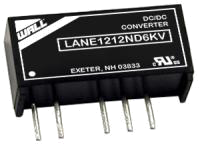 Series Description: The PSAYC series of AC/DC switching power supplies provides 2 watts of output power in a 1.33" x 0.87* x 0.67* encapsulated PCB mountable package. | Input Voltage: 10.8-13.2, 4.5-5.5 | Input Voltage: 5, 12 | Output Voltage: 5, 12, 15, ±5, ±12, ±15 | No. Outputs: S, D | Output Power (W): 1 | Get a QuoteDownload Datasheet |
DC DC Converters - The LANE-6KV series of 1 watt DC/DC power converters are specially designed to provide ultra-high levels of isolation in a miniature SIP package. This series consists of single and dual output models with 3000VACrms (6000VDC) isolation. | ||||||
PF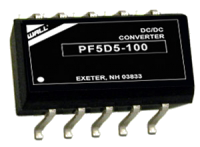 Series Description: The PSAYC series of AC/DC switching power supplies provides 2 watts of output power in a 1.33" x 0.87* x 0.67* encapsulated PCB mountable package. | Input Voltage: 10.8-13.2, 21.6-26.4, 4.5-5.5 | Input Voltage: 5, 12, 24 | Output Voltage: 3.3, 5, 9, 12, 15, ±5, ±9, ±12, ±15 | No. Outputs: S, D | Output Power (W): 1 | Get a QuoteDownload Datasheet |
DC to DC Converters - PF Series DC/DC converters have a "gull wing" design which is compatible with virtually all pick-and-place and solder reflow processors. Applications include datacom, telecom, and all distributed power systems. | ||||||
DCMAPU01H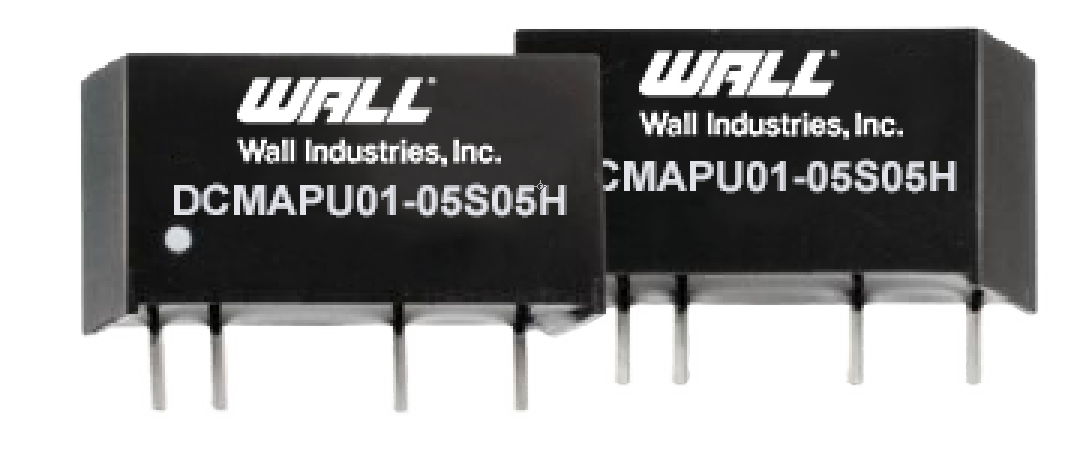 Series Description: The PSAYC series of AC/DC switching power supplies provides 2 watts of output power in a 1.33" x 0.87* x 0.67* encapsulated PCB mountable package. | Input Voltage: 2.97~3.63, 4.5~5.5, 10.8~13.2, 21.6~26.4 | Input Voltage: 3.3, 5, 12, 24 | Output Voltage: 3.3, 5, 12, 24 | No. Outputs: S, D | Output Power (W): 1 | Get a QuoteDownload Datasheet |
The DCMAPU01H series offers 1 watt of output power in a compact 0.77” x 0.40” x 0.28” standard SIP-7 package. | ||||||
What does a DC to DC converter do?
A DC-DC converter converts one DC voltage to another, this can be either down to a lower voltage (buck converter), or up to a higher voltage (boost converter).
What are the types of DC to DC converter?
Types of DC to DC converter include Non-Isolated DC to DC Converters, High Voltage Isolated DC to DC converters and High Voltage Input DC to DC Converters.
Why are DC power supplies needed?
DC power supplies provide a constant flow of current to a device at the appropriate voltage for the given situation.
What industries use DC DC power converters?
DC DC converters offer a diverse solution for various applications across all industries, due to higher power efficiency and reliability. They are commonly used in the railway industry, powering vehicles, the renewable energy sector and industrial robotics.
Why are DC DC power converters useful in the Medical sector?
DC DC power converters able to power a range of devices with different power requirements by matching the appropriate loads, to ensure that safety is always paramount in the environment. Any DC/DC conveter used in a medical environment will need to be designed to meet IEC60601-1 to ensure it has proper safety and reliability standards.
What is the main difference between AC DC and DC DC power supplies?
The main difference between the AC DC and DC DC power supplies is the direction their electrons flow. AC DC power supplies has an alternating current and has an AC input source, where the electrons continuously change direction. On the other hand, DC DC power supplies uses an DC input source, where elcetrons flow steadily in the same direction.
How do I choose the right DC converter for my application?
When choosing a DC converter, you should consider factors such as the required output voltage and current, load regulation, efficiency, and reliability. You should consider the safety requirements for your application to ensure that you meet safety standards.
Get a Quote
Request information for from Wall Industries.
"*" indicates required fields
Custom Solutions
Wall Industries, Inc. offers fully custom power design capabilities. Our team of electrical and mechanical power design engineers will utilize proven design topologies and concepts to create a solution to your power requirements. If you don’t have a specification, Wall’s engineering team will assist you in determining what your requirements are and how best to provide a solution.
Custom Power Supplies